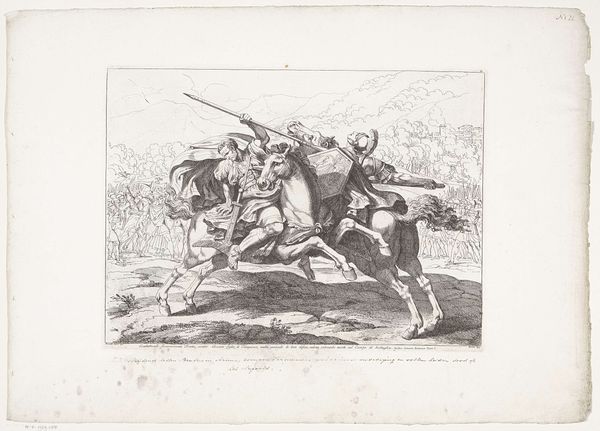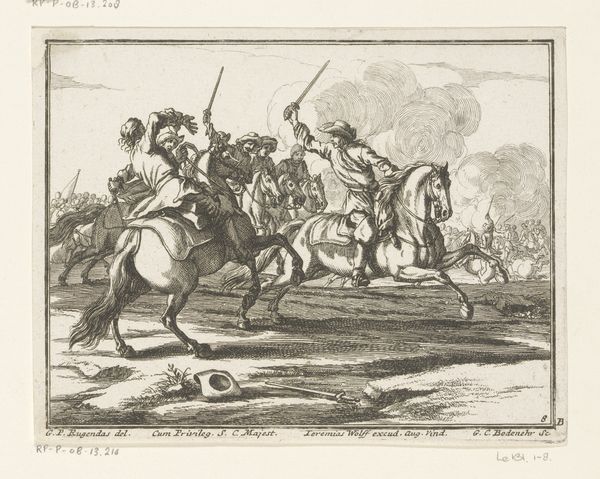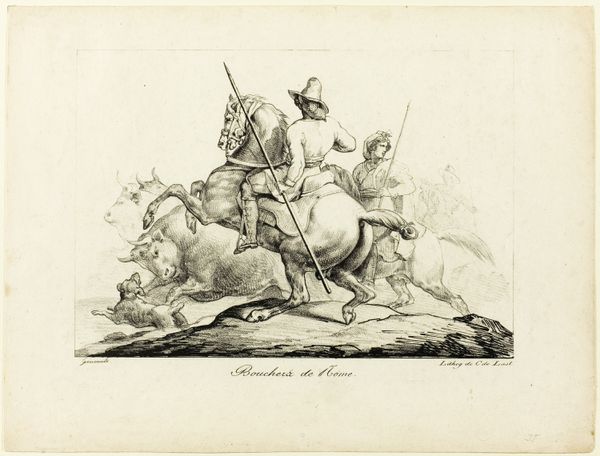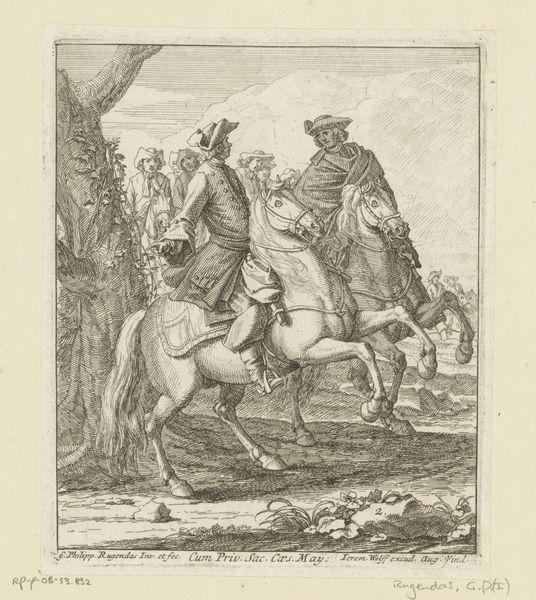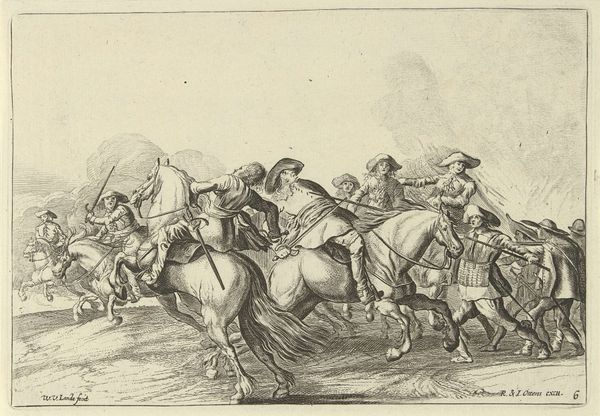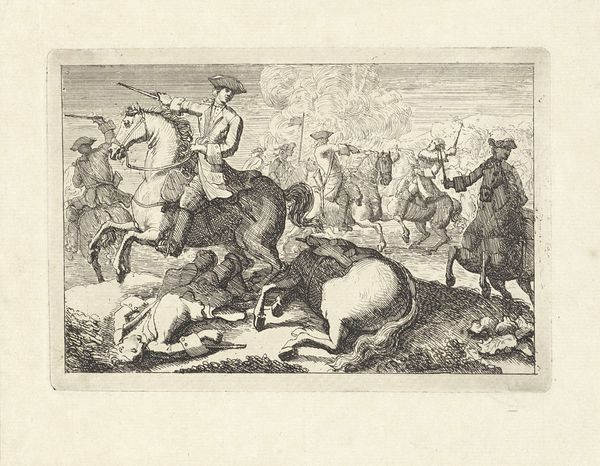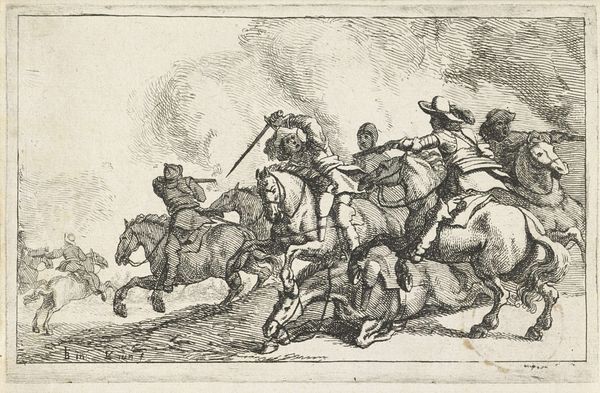
drawing, lithograph, print, paper, ink, engraving
#
drawing
#
ink drawing
#
narrative-art
#
lithograph
# print
#
paper
#
ink
#
romanticism
#
history-painting
#
engraving
Dimensions: 332 × 405 mm (image); 438 × 591 mm (sheet)
Copyright: Public Domain
Curator: Carle Vernet's "Hussard Killing a Cossack with a Sabre," created circa 1817, uses ink and lithography on paper to depict a brutal scene of conflict. Editor: My immediate reaction is that this artwork feels both dynamic and strangely ornamental, a glorification of violence, wouldn't you agree? The composition guides your eye right to the central clash of figures. Curator: It absolutely romanticizes violence. Vernet came from a family of artists who depicted military subjects during a time when France was often at war. He presents the figure of the hussard here as an agent of patriotic, even nationalistic, identity, particularly in contrast with the ‘othered’ Cossack. Editor: The details are so captivating—look at the fur cap, the plumed helmets, and elaborate weaponry, it reminds me of medieval heraldry, using visual elements to signify opposing forces locked in an eternal struggle. The Cossack with his fur-lined cloak represents perhaps barbarity to the refined French Hussard? Curator: Exactly! There's a deliberate visual language at play here. Consider also the historical context. 1817 is right after the Napoleonic Wars, a period rife with nationalistic fervor but also grappling with questions of French identity after the defeat. Vernet’s print subtly suggests French martial superiority despite very recent setbacks. Editor: And look at the horses too! The rearing, powerful steeds mirroring the fury of the riders above, but also signaling wealth, status and of course, power. This is a very elaborate spectacle. The sabre is glinting and raised like a blazon or crest. Curator: Yes, the animals, too, are gendered as powerful symbols of French virility. It's an artistic rendering of colonial violence, framed as a righteous assertion of French identity. It can be disturbing to look at now with that lens in mind. Editor: Understanding the symbolic language and social context enriches our reading of even a seemingly straightforward historical image. Seeing this today can help reflect on the legacy of romanticized violence in art. Curator: Agreed. There’s much here to unpack when looking at Vernet's drawing, even 200 years later.
Comments
No comments
Be the first to comment and join the conversation on the ultimate creative platform.

